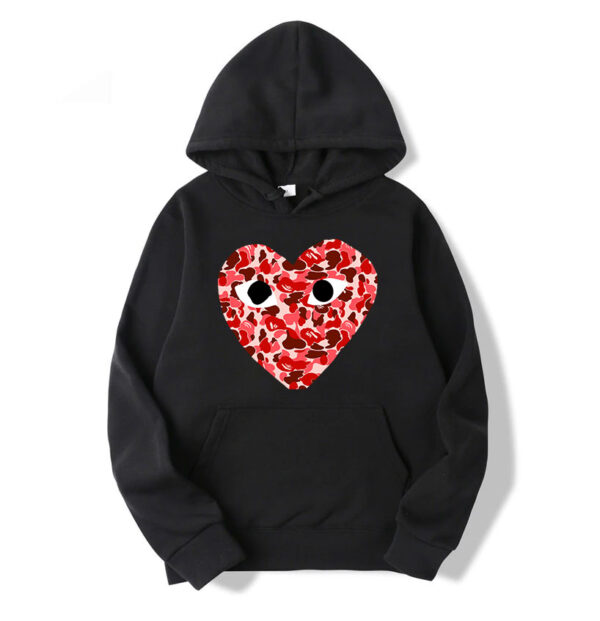Comme des Garçons (CDG) has consistently challenged the conventions of luxury fashion, with designer Rei Kawakubo transforming the brand from an avant-garde label into a globally influential fashion powerhouse. From redefining aesthetics to pioneering new approaches to brand marketing, Comme des Garçons has left an indelible mark on the luxury fashion landscape. This article examines the multifaceted impact of CDG on luxury fashion brands, shedding light on how the brand has reshaped design, marketing, retail, and consumer expectations.
Revolutionizing Avant-Garde Fashion
From its early days, Comme des Garçons embraced an avant-garde approach, creating pieces that defied traditional definitions of beauty. Rei Kawakubo, the brand’s founder and creative director, introduced a raw and deconstructed aesthetic in the 1980s that was initially met with shock and resistance. Her designs featured asymmetry, unconventional silhouettes, and muted colors, opposing the popular glitz and glamor of that era.
Emphasizing Conceptual Design Over Trends
Kawakubo’s collections often convey deeper themes, such as identity, gender fluidity, and societal roles. This focus on meaning over mainstream appeal inspired many luxury brands to reconsider their approaches to design. Major luxury houses began integrating conceptual themes, blurring the line between fashion and art. As a result, CDG helped usher in a wave of philosophical and narrative-driven fashion.
Challenging Gender Norms in Fashion
CDG introduced unisex collections and challenged traditional ideas of masculinity and femininity, reflecting Kawakubo’s interest in dismantling societal expectations. Her use of oversized and shapeless silhouettes allowed for freedom of expression beyond gendered constraints.
Redefining the Role of the Designer
Rei Kawakubo’s hands-on, deeply personal approach to commedesgarconsshop.org set a new standard for designers as brand leaders. She was one of the few designers who maintained creative control over both design and business operations. This model inspired a generation of designers to assume a stronger role in defining their brand’s identity and values.
Pioneering New Retail Experiences
Comme des Garçons’ retail spaces are known for their artistic, immersive design that transforms shopping into an experiential process. The brand’s iconic Dover Street Market, which first opened in London in 2004, was designed as a multibrand concept store that featured installations, collaborations, and creative displays. This was an unconventional move in luxury retail at the time, which primarily focused on single-brand, high-end showrooms.
Collaboration as a Creative Strategy
While luxury brands traditionally avoided collaborations with mainstream labels to preserve exclusivity, CDG defied this notion by embracing streetwear and high-street brands. These collaborations appealed to younger consumers and expanded CDG’s reach beyond the traditional luxury clientele.
Cultivating Brand Mystique and Exclusivity
Despite its global presence commedesgarconsshop.org has maintained an aura of exclusivity and mystique that luxury brands often strive to achieve. Kawakubo rarely gives interviews, and CDG operates with limited advertising and promotional campaigns. This restraint in self-promotion created an enigmatic brand identity, making CDG highly desirable among fashion connoisseurs and collectors. Luxury brands have taken note, with many adopting similar strategies of scarcity and mystique to foster allure and customer loyalty.
Influencing Sustainable and Ethical Fashion
Comme des Garçons has often utilized recycled and unconventional materials, challenging the norms of material selection in luxury fashion. By demonstrating that innovative, high-fashion looks could be created with unconventional fabrics, CDG encouraged other luxury houses to experiment with sustainable practices and ethical sourcing, paving the way for the eco-conscious movement now prevalent in luxury fashion.
Impact on Streetwear and High Fashion Fusion
Comme des Garçons played a crucial role in bridging the gap between streetwear and high fashion. The hybridization of streetwear and luxury influenced brands like Balenciaga and Louis Vuitton to explore the crossover between high fashion and urban culture. This fusion has become central to the contemporary luxury market, reaching a broader demographic and making luxury fashion more accessible.
Setting Standards for Longevity and Innovation
One of CDG’s lasting impacts on luxury fashion is its commitment to continuous innovation. Kawakubo’s forward-thinking approach, refusing to conform to predictable patterns, has given the brand a timeless quality that defies seasonal trends. This long-term vision is something that luxury brands increasingly strive to emulate.
Conclusion: Redefining Luxury Fashion Through Innovation
Comme des Garçons has transformed the luxury fashion landscape by redefining what luxury can be. Through innovation, inclusivity, and boundary-pushing design, CDG challenged luxury brands to broaden their perspectives and appeal to a more diverse, socially conscious audience. By championing conceptual design, embracing collaborations, and pioneering new retail and aesthetic approaches, CDG has reshaped the expectations placed upon luxury brands. The brand’s influence has inspired luxury fashion to become more experimental, inclusive, and responsive to cultural shifts, ensuring its continued relevance in an ever-evolving industry.



